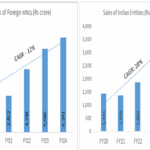New Delhi, September 28, 2017: What are the common diseases which affect your heart?
Heart can be affected by a number of common diseases. The most common and dreaded disease of the heart is of course coronary artery disease or heart attack in which the blood supply to the heart muscles is reduced and stopped completely. Heart failure in which the pump function of the heart is reduced is another common ailment. Additionally disease of the heart valves or abnormality of heart rhythm is also important cardiac ailments.
How to know your risk for heart disease?
There are certain known risk factors for heart disease, many of which are preventable
- Know your blood sugar level:- High blood sugar level or diabetes is one of the most important risk factor for heart attack. Diabetics have 2-4 times increased risk of dying from heart attack compared to non-diabetic. Your normal fasting blood sugar should be below 100mg/dl and postprandial sugar (2 hours after meals) should be below 140mg/dl. HbA1C or glycosylated haemoglobin measures the average blood sugar over last 08-12 weeks and should be below 6.0%. Diabetes have fasting blood sugar > 126 gm/dl or HbA1C > 6.5%.
- Know your blood pressure:- High blood pressure is another important modifiable risk factor. It is also called the silent killer because many patients do not get any warning or signs and symptoms. Normal blood pressure should be below 120/80 mmHg. A single or occasional high reading needs a closer monitoring of your blood pressure. Blood pressure reading between 120-139/80-89 mmHg is called pre-hypertension and such people need active life style changes to control BP blood pressure consistently above this require medication. The best way to protect from hypertension is to keep checking your blood pressure regularly.
These are common myths about blood pressure and we need to be educated about them
Myth 1: High blood pressure runs in my family and i can do nothing to prevent it. However with good life style changes one can actually avoid getting high blood pressure in many cases with family history of hypertension.
Myth 2: Since I don’t use table salt my sodium intake is low. The fact is 75% of our oral sodium intake comes from hidden sources like tomato sauce, soups, canned foods & bakery items. It is therefore important to read the food labels and check sodium content on most of pre-packaged food items.
Myth 3: Since i have no problem with high blood pressure it is okay not to treat it However, the fact is that many patients may have no symptoms due to high blood pressure but still have high risk of getting stroke or other health problems due to raised blood pressure & it is important to take treatment irrespective of symptoms.
Myth 4: I read wine is good for health & I can drink as much as i want. However, the fact is that heavy & regular use of alcohol can increase blood pressure dramatically & can lead to heart failure, stroke or irregular heartbeats. One must restrict consumption to no more than two drinks for men and one drink per day for women.
Myth 5: Since my blood pressure is now normal after taking medicines, I can stop it.
On the contrary majority of the people may require lifelong medications. Some may bring down the requirement of medicines by adopting aggressive life style changes.
What are the complications of high blood pressure?
Uncontrolled blood pressure can lead to many diseases including:-
- Heart attack
- Stroke
- Heart failure wherein the heart can enlarge & the pump function can become weak.
- Kidney dysfunction or failure
- Vision loss
- Sexual dysfunction in males
- Angina
- Peripheral arterial disease whereby the blood supply to legs, arms or stomach and intestine can be reduced.
What is low blood pressure?
Within a range of blood pressure readings, the lower the blood pressure measurements, the better it is. However often normal people specially thin built females carry a misconception that their lower blood pressure reading indicates some disease. There is no specific (from blood streams & artery walls. It is recommended that all adult above 20 years of age or older should have their cholesterol levels checked every 4-6 years. Instead of looking at your total cholesterol value it is now important to check the sub fractions also, the valves of the sub fractions are not treated in isolation. Rather the levels are considered in context of other risk factors also.
Number at which day to day blood pressure reading is considered too low provided the person is having no symptoms or trouble. Medically speaking a chronically low blood pressure reading is considered dangerous if it is associated with symptoms like dizziness, nauseas, fainting or blurring of vision. Some pathological causes of low blood pressure are prolonged bed rest, first 6 months of pregnancy major blood loss, severe infection and sepsis heart attack, severe allergic reactions (anaphylaxis), certain hormonal problems and drugs etc. Persistently low blood pressure with symptoms and cold sweat needs immediate attention by a medical expert.
Know your cholesterol level-
Cholesterol is a fat containing substance in our body and some amount of cholesterol is needed to build our brain and cellular functions. Our body gets cholesterol from two sources either our liver synthesizes cholesterol or we get it from diet. There are three important sub fractious of cholesterol LDL, HDL and triglycerides. Doctors always advise people above 20 years of age to get their cholesterol level checked in every 4-6 months. Apart from this people should also be aware of the cholesterol triggers and the preventive methods.
Author of this article – Dr. Gunjan Kapoor, Director, Interventional Cardiology, Jaypee Hospital, Noida







